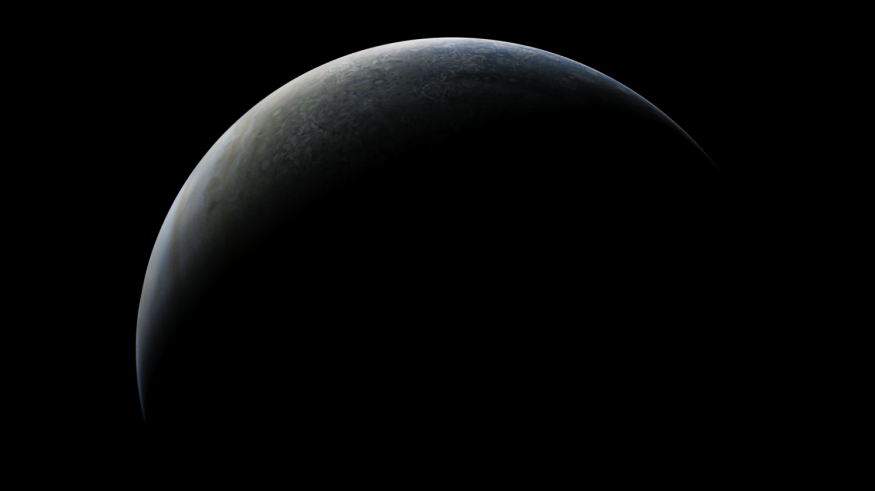Jupiter looms vast in this image from NASA's Juno mission, with the shadow of its largest moon, Ganymede, blanketing its clouds.
After analyzing data from the Juno spacecraft's 20th close flyby in May 2019, citizen scientist Kevin M. Gill shared the image on Twitter and Flickr.

NASA Juno Mission Quickly Captures Ganymede Overshadowing Jupiter
NASA said per Space.com that Juno flew as near as 9,200 miles (14,800 kilometers) above the massive planet's cloud tops during this 20th flyby.
Because of Jupiter's powerful radiation, Juno can only undertake such movements quickly.
In both its primary and first extended missions, the spacecraft has withstood the radiation so far.
Jupiter and the shadow of Ganymede, @NASAJuno Perijove 40https://t.co/vX9mukMnnl pic.twitter.com/I8XhpK7afL
— Kevin M. Gill (@kevinmgill) March 1, 2022
Juno is currently working on its second extended mission, which will exploit a polar-orbiting perspective that no other spacecraft has been able to use to peek deep into Jupiter's clouds.
Last month, NASA revealed photographs of Jupiter and Ganymede from Juno, with Gill assisting in creating the Jupiter image.
Juno passed just 650 miles (1,046 kilometers) above Ganymede's surface during a flyover in June 2021, revealing the rough terrain.
Officials also released Gill's backlit Jupiter image, captured during Juno's 39th close pass on Jupiter on Jan. 12.
About NASA Juno Mission
Juno arrived at Jupiter in 2016 as part of a larger mission to better understand and monitor Jupiter's atmosphere, including its diminishing Great Red Spot, complex storm systems, and many cloud bands.
Scientists expect that the mission's findings will help them better understand how huge planets function in general, particularly faraway exoplanets that are difficult to see with telescopes.
Mashable said the primary purpose of NASA's Juno mission is to learn more about Jupiter's origins and development.
Jupiter's extensive cloud cover hides insights about the underlying processes and situations that influenced the birth of our solar system.
As our primary example of a huge planet, Jupiter can also help us comprehend the planetary systems discovered near other stars.
You may fly onboard the Juno spacecraft in real-time at any point throughout the mission using NASA's Eyes on the Solar System and simulated data from the Juno flight team.
Jupiter Moon Ganymede
Meanwhile, Interesting Engineering said Ganymede is a massive natural satellite orbiting Jupiter at a distance of around 665,000 miles (more than one million kilometers).
It orbits Jupiter in seven days and three hours per revolution.
The radius of Ganymede is 1,635 miles (2,631 kilometers), making it the Solar System's largest moon.
Ganymede is bigger than Earth's moon, which has a radius of 1,079.6 miles (1,737.4 kilometers).
It's also bigger than Mercury, the smallest planet in the Solar System, with a radius of 1,516 miles (2,439.7 kilometers), Pluto, and Mars, and only slightly smaller than Mars.
If the Solar System's objects would be ranked by size, Ganymede would come in ninth.
Jupiter's moon weighs 1.481020 tonnes (each tonne equals 2,204.6 pounds or 1,000 kilograms), which is roughly twice the mass of the moon of the Earth.
Check out more news and information on Space in Science Times.











